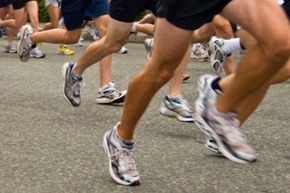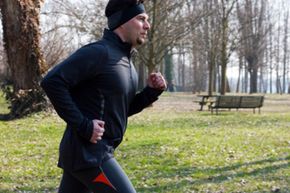When you cross the finish line at the end of your first marathon, sweat stinging your eyes, the first thing you may notice is your body, specifically your legs: numb, quivering, miraculous. Next, a low rumble of noise will sharpen slowly into jubilant cheering. A friend's familiar face, smiling ear to ear, will swim into focus amid the blur of a finish line crowd. Someone will hand you a sports drink, a foil blanket. Someone will drape a medal around your neck. "When you cross that finish line -- no matter how slow, no matter how fast -- it will change your life forever," said professional marathoner Dick Beardsley in the film "Spirit of the Marathon." You've decided to train for your first marathon; something in you is ready to embrace that change.
Legend has it that around 490 B.C., Athenian army messenger Pheidippides took off running from Marathon, Greece, to deliver a message of victory over the Persian army. Over 25 miles (40.2 kilometers) later, he reached Athens, where he delivered his message -- and then promptly keeled over and died from exertion. In 1896, the first modern Olympic games commemorated the hero's feat with an endurance run from the Plains of Marathon to the Olympic stadium in Athens. Dubbed the "marathon," this footrace became an even greater test of endurance in 1908 when Queen Alexandra, wife of Edward VII, requested that the race be lengthened to 26.2 miles (42.16 kilometers) so she could view the finish from her perch in Windsor Castle [source: Galloway].
Advertisement
Today, the prevalence of "26.2" bumper stickers and T-shirts marks a sea change in popular attitudes about the sport. Though at elite levels the marathon is as exclusive as ever, the sheer number of participants simply seeking to finish the distance has more than doubled in the past 10 years [source: Newman]. Whether you're training for your first marathon with a specific goal in mind or for the thrill of finishing the world's most iconic endurance test, you'll want to begin with the basics.
First up, what sort of gear will you need? We explore that in the next section.
Advertisement



